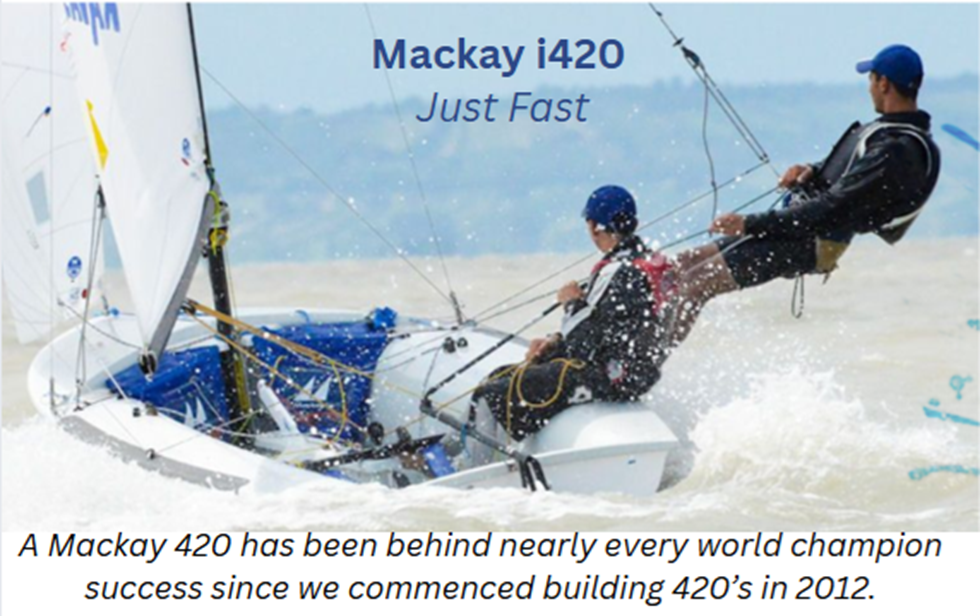
Prior to 1970 there were many different kinds of boats in college sailing. Competitors would show up at nationals having never even seen, let alone sailed, the class of boats to be raced. One year it was
Along came FJs and 420s. Yale took the lead with I- 420s but with the pounding they took on the widest fetch of Long Island Sound, they went through three fleets in less than a decade. So they ordered a beefed up version and the heavy but durable club 420 was born. Although it took a few more iterations to get the boats nearly indestructible not much has changed since. Lasers and Radials are always used for singlehanded champs while the intermediate keelboats (and sometimes large centerboarders) still vary from year to year at the Sloop Nationals. Navy 44s (big sloops, Yawls before 1990) are the boat for the national big boat invitational for the Kennedy Cup.
Coaching increased in 1980 with many new coaches while part-timers became full-time. The biggest impact has been recruiting but coaches also raise money. Recruiting has dramatically changed the demographics of college sailing. The excellent junior talent in the
Today the eastern intersectionals are stacked but so are nationals since the semi-finals allow more top teams to qualify. The level of sailing has gotten even higher since regattas every single weekend are stacked with talent from first to last. The slightest slip up on the starting line or windward mark and you’re history. Even the next level of mini-majors and some minor regattas are far more competitive than ever before. There is also very good club level racing all over the country whether it is among the best of the teams without coaches or second and third string teams with coaches.
Predicting the future is always fraught with guess work. Most attempts are a straight line projection of the present but nothing happens in straight lines. Technological advances are always on an exponential curve while most events, such as the economy and the fortunes of athletic teams, happen in cycles. When Paul Elvstrom raced at a Yale regatta many years ago he was asked about the future of sailboat racing. He responded that while the boats and equipment will always evolve, the tactics remain the same. That makes it easy for college sailing coaches who don’t need to be constantly re-educated like most other professionals. There are, however, subtle changes in tactics as rules, boats and race courses change but in college sailing, the boats have changed very little in thirty years.
Let’s start our predictions with the (flawed) straight line method. The boats will continue to be club FJs and club 420s. Most teams have one or the other. Some of the bigger programs have eighteen of one and six of the other; a few even have eighteen of both. Coaching will continue to increase as college sailing becomes even more accepted by budget constrained athletic departments. More teams will emerge from active but not super talented club teams with part-time coaching to become varsity powerhouses. In the 90’s
Can the
Now let’s bend the bar a little. The next change in formats will be in our sloop championships. The
Should there be a new college dinghy? I’m all for it. Rather than debating the attributes, I could go on for pages, let’s just dream of some possibilities. What if we had a simple, affordable, durable college dinghy that requires a bit more athleticism and technical knowledge for coed sailing and delivers a more exhilarating ride than our current boats? Imagine a small asymmetrical spinnaker for fleet racing while team racing with just main and jib. One argument against is that it will put our many beginner crews further behind. Naysayers said exactly that in the early 70’s about adding jibs.
Ken Legler, URI’77, Tufts Sailing Coach since 1980
